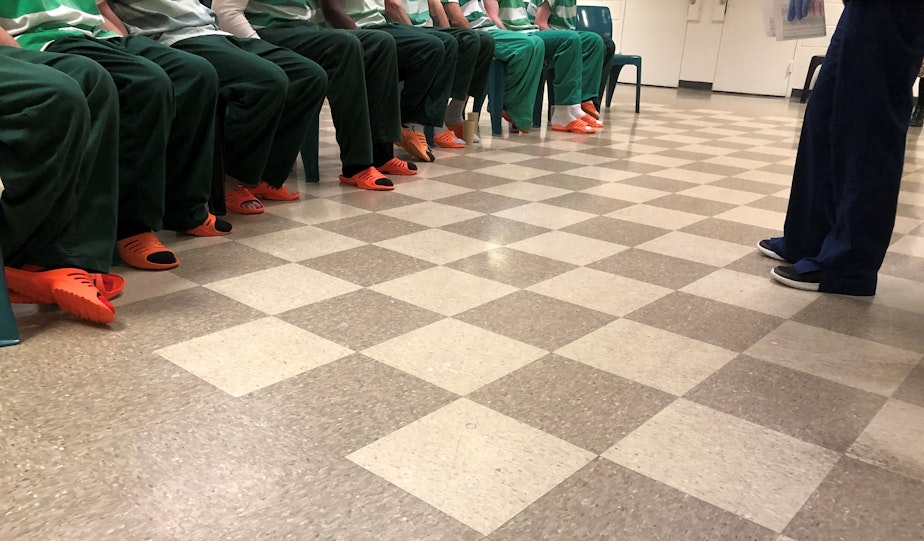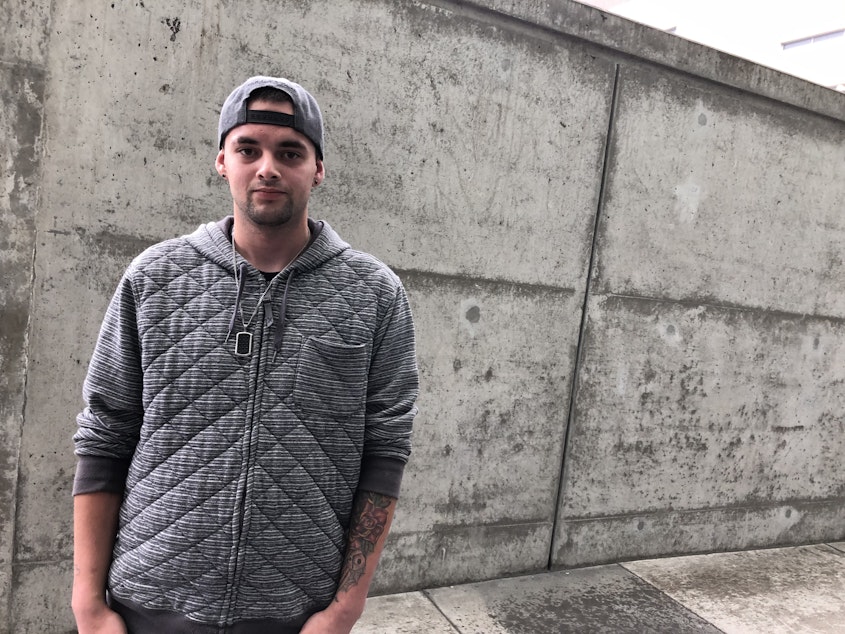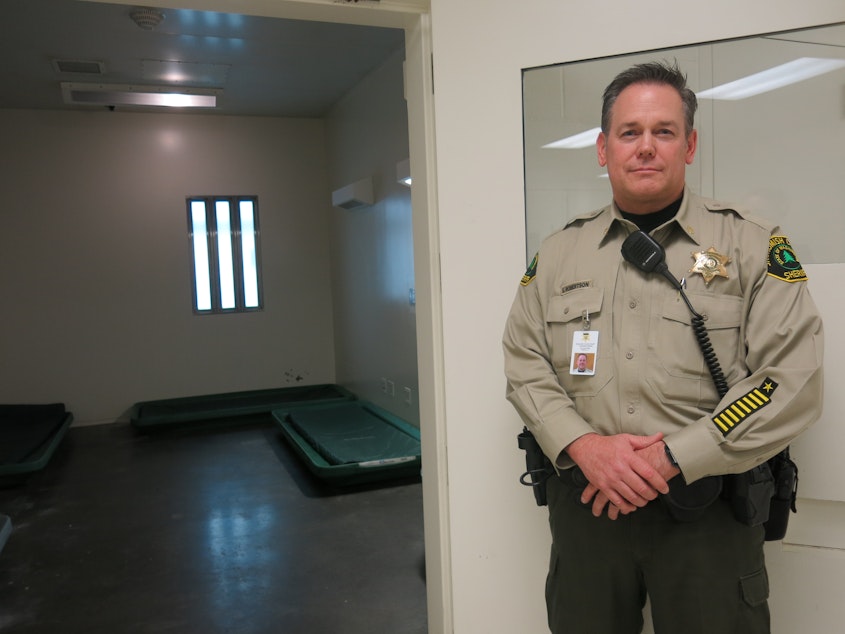Give treatment to any inmate who wants it. That's Snohomish County Jail’s radical opioid plan

The Snohomish County Jail had a big problem five years ago. Its medical unit was flooded with inmates in drug withdrawal.
“They’re four to a cell on the floor, they’re constantly vomiting, they have to share one toilet," jail chief Jamie Kane said. "It is not a good environment for anybody.”
In December 2018,the jail tried a solution: offering drug-based treatment for opioid abuse in a pilot program. Initial results were promising, and now the jail is offering the treatment to any eligible inmate who wants it.
During the 10-month pilot program through September 2019, 104 inmates enrolled and remained active in medication-assisted treatment. But the size of the program was limited by the number of providers available to prescribe it. And those inmates didn't get medication every day, just at the beginning to manage withdrawal and ramp up again shortly before their release.
When the program expanded Sept. 29 to provide comprehensive treatment to all eligible inmates, 197 were enrolled in the first two weeks.
Officials expect that number to climb, since they estimate that people with opioid use disorder make up 30-40 percent of jail bookings.
Sponsored
Now every day in certain housing units in the jail, a medical assistant hands a line of inmates small plastic cups containing doses of buprenorphine, and checks that they’ve swallowed it.
The dose kills their cravings for opioids and prevents withdrawal. In a recent report, Columbia Legal Services called on jails to offer medication-assisted treatment to prevent jail deaths. But it’s still rare to offer it in this setting.
Jails have two major barriers to offering the treatment. They don’t have enough prescribing doctors. To fill that gap, the jail has partnered with Ideal Option, a treatment provider that works with participants inside and outside the jail.
Also in jail, buprenorphine can be diverted and abused. To cut down on misuse of the drug, all the inmates receiving it are housed together. “There’s less incentive to divert when everybody in your pod is on the same medication,” according to Dr. Ken Egli, medical director for Ideal Option.
Jordan and Jesse, who just gave their first names, are part of the group receiving their dose. They say living with other inmates seeking drug treatment helps build community.
Sponsored
“We’re comfortable with each other,” Jordan said, “because we know we’re all struggling with same thing.”
“It’s more of a ‘brotherhood’ type of thing in here,” Jesse added. “Because we all know we get a privilege.”
Jesse said he’s been in the jail for six weeks. When he arrived he was gaunt and strung out. Already he’s gained forty pounds and is getting regular sleep. He’s worked on a plan with jail staff and outside healthcare providers, so he knows he’ll continue his treatment when he’s released in a few days.

When the opioid crisis first surfaced five years ago, all the staff could give inmates to ease withdrawal symptoms was Gatorade.
Sponsored
But they worked with outside healthcare providers to expand access to buprenorphine. Healthcare administrator Alta Langdon said she’s excited that now, anyone in jail for a day or more can start medication-assisted treatment and make plans for continuing treatment once they’re released.
“As a nurse practitioner I want to follow best practice, and best practice is starting people on medication, maintaining their medication, and connecting them to community resources,” Langdon said.
Dale Erickson is 23 and a sign of the program’s promise. He made the transition to treatment with the help of jail staff when he was released last June.
“I’m currently five months clean,” he said. “I have a job, I have stable housing, I have a better relationship with my parents and my family.”
Erickson said he started using heroin when he was 16, and spent years in the criminal justice system’s revolving door.
Sponsored
He said, “I have three felonies and 32 misdemeanors and I can honestly say that every charge was drug-related.”
Erickson credits the stability of his time in jail, and the support of his family, as motivating him to enter treatment. The jail’s treatment providers also did one very basic thing – they gave Erickson a ride to his appointments, which he said was crucial. “It’s a lot better than just knowing you’re walking out the door to nothing. They have somebody to pick you up, take you to first appointment, to meet your doctor,” he said.
He’s currently training to become a diesel mechanic.

Geoff Godfrey is a nurse practitioner with Ideal Option who works with inmates seeking treatment. He congratulated Erickson for all his progress and said it’s the job of addiction treatment providers not just to dispense the best treatment but to “be a coach and support you and watch you grow.” Erickson said he still receives addiction counseling.
Sponsored
The medication-assisted treatment program in Snohomish County is paid for through private health insurance, Medicaid, and state and federal grants. The general fund pays for the medication itself, which Kane said is well worth it.
“Quite frankly at less than $1 a day we can’t afford not to,” he said.
Snohomish County Sheriff Ty Trenary said in terms of the broader opioid epidemic, “We’ve found the recipe that we think will get us out of this crisis, we just need capacity to make it happen.”
He said they’re focused on two prongs: an outreach team of law enforcement and social workers tries to connect homeless people with treatment and housing through the county’s “diversion center.” And jail staff help inmates plan for treatment, jobs and housing once they’re released. They plan to gather data on whether jail inmates continue with treatment, and whether they reoffend in the future.
Kane said for now at least he knows the dedicated housing units are calmer and less chaotic than the general population, and the medical unit is not overrun, and has fewer inmates in withdrawal. He said, “One thing we can say for certain is our ability to safety and humanely house arrestees in our facility is light years ahead of where we were a year ago, definitely five years ago.”
This type of treatment is also available in Lewis and Benton Counties. King County is hoping to offer it by the end of the year.




